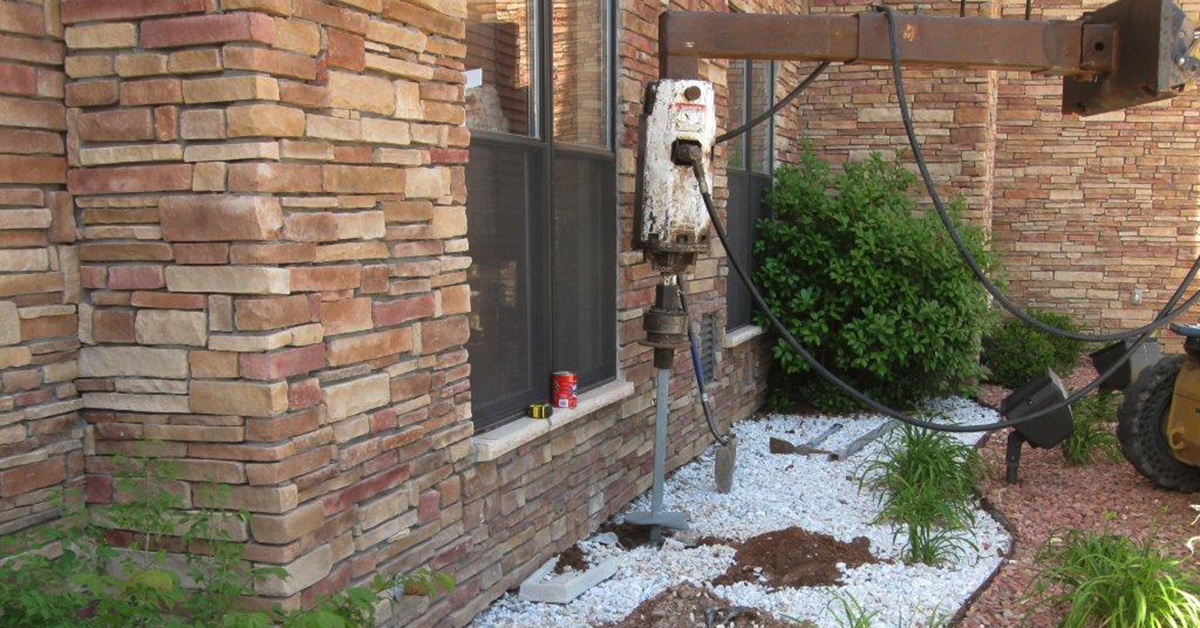With residential remedial foundation repair becoming a greater concern, the Chance® helical pile was developed in the mid-1980s and was issued a helical underpinning methods patent in 1992. This all sounds well and good, but the question remains: Why are helical piles so effective for remedial foundation repair?
To answer that query, let’s first start by answering the question "What is a helical pile?". It is a segmented, deep-foundation system with helical bearing plates (known as helices) welded to a central shaft. The load of the structure or application is primarily transferred from the shaft to the soil through these plates.
The helices don’t auger the soil but rather screw into it with minimal disruption. The helical plates are located on the piles’ first section, referred to as the “lead” or “starter” section. The lead can consist of one to four helices but additional helices can be added by using helical extensions. Plain Extensions are added until the lead section penetrates the soil bearing strata and the required torque is achieved.
We’ve answered the “what,” so now it’s time to understand the “why.” When sifting through all the foundation repair options, why should engineers and contractors choose helical piles?
The deep foundation repair market is saturated with options. Driven piles, drilled shafts, grouted tendons, auger-cast piles, belled piers, timber piles, and others. However, helical piles offer a number of compelling advantages over those choices:
- Convenience - they can be installed with common construction equipment.
- Immediate loading – no waiting for concrete to cure
- Ease of use – install in limited access sites, high water tables, and weak surface soils
- No excavation or spoil removal
- Year-round installation – even in rain or snow
- No vibration – won’t disturb neighboring structures
- Smaller crews needed for installation - reduced labor costs
- Removable and reusable
- Pre-engineered - consistent and predictable results.
A.B. Chance developed the first helical anchors more than a century ago and have since consistently dedicated resources to research and improvement. Soil and pile studies have resulted in the compilation and documentation of a wealth of knowledge that enables us to accurately predict helical pile performance in most soils.
Supported and sold by an expert distribution team across North America, Chance helical piles are the clear choice for effective foundation repair.
Learn more about Chance Helical Piles from your local distributor.

